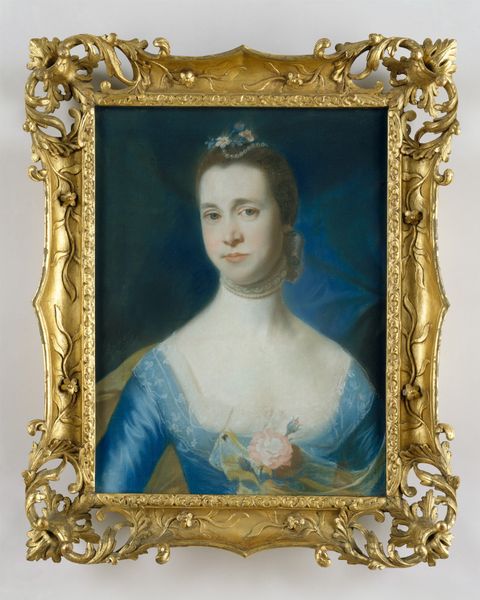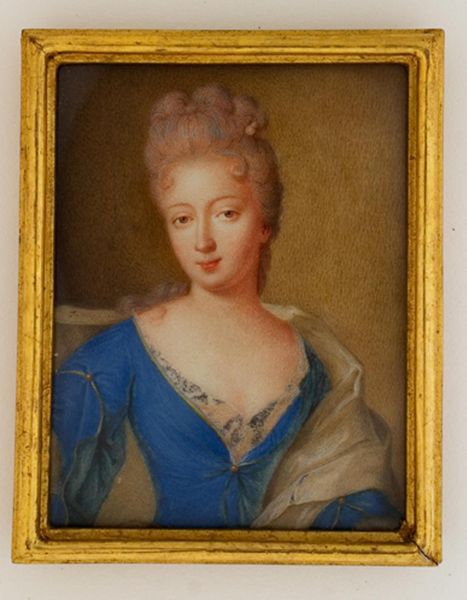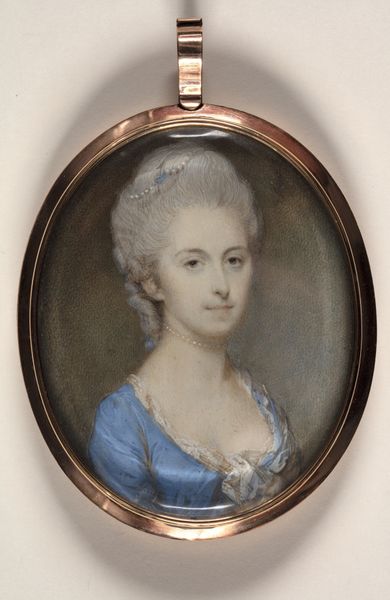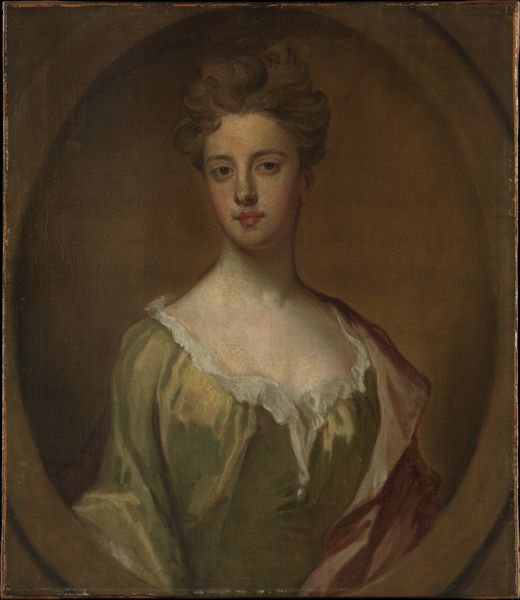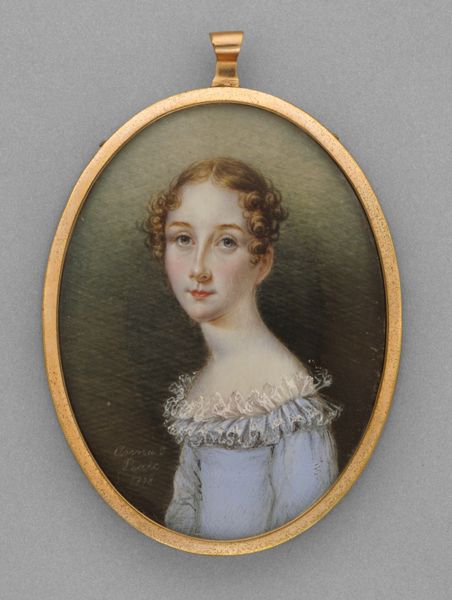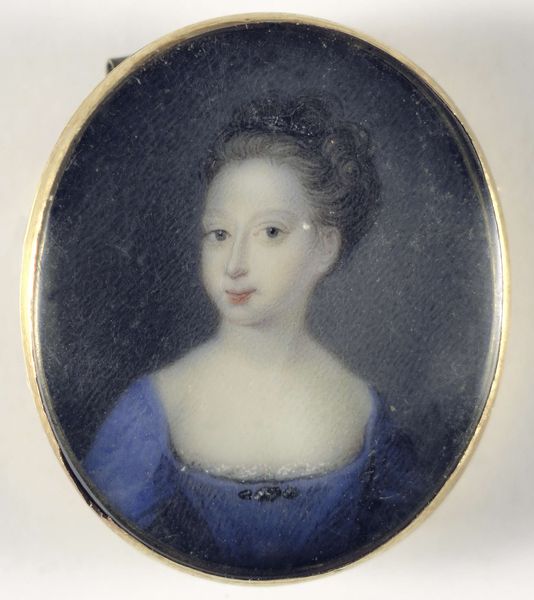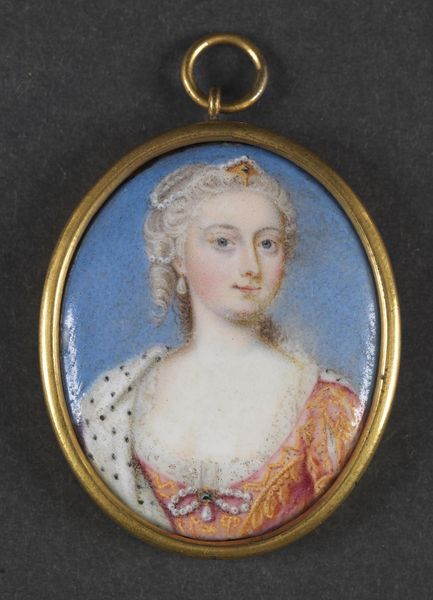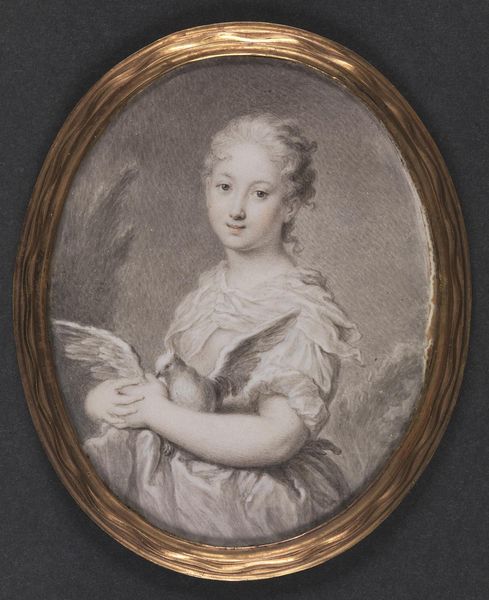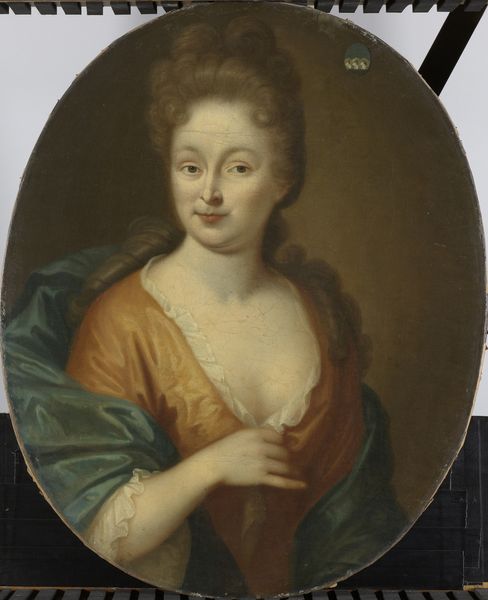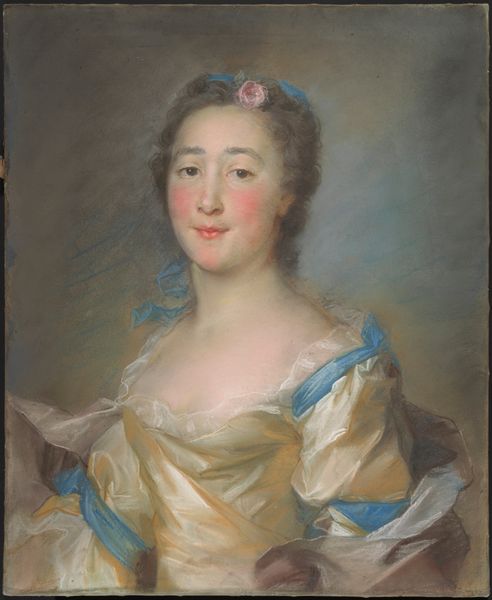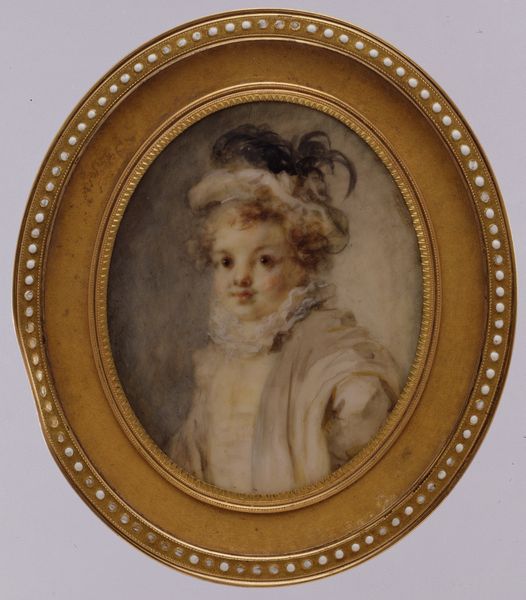
painting, watercolor
#
portrait
#
painting
#
watercolor
#
coloured pencil
#
decorative-art
#
watercolor
#
rococo
Dimensions: Frame: 7.6 × 6.4 cm (3 × 2 1/2 in.)
Copyright: Public Domain
Editor: This is Rosalba Carriera's "Portrait of Countess Gräfin von Fürstenberg," painted around 1740, using watercolor and possibly colored pencil. The overall impression is one of delicate beauty. What layers are present in such intimate portraits, and how did Carriera use this piece to challenge the artistic and social conventions? Curator: It's a lovely piece, isn’t it? Considering Carriera’s unique position as a woman artist in the Rococo era, and a pastellist during the Enlightenment, this portrait acts as a subtle assertion of female agency. This wasn't just about depicting the Countess’ likeness; it was a performance, staged for a specific social stratum that consumed and upheld certain images of aristocratic womanhood. What details speak to that "performance" for you? Editor: I see the flowers in her hair, perhaps alluding to fleeting beauty, or is she presenting herself a certain way to maintain the family's prestige? Also, the bright blue is hard to miss and is almost attention-grabbing. Curator: Exactly! Think of that blue dress—not just a garment, but a carefully chosen symbol. What does the brightness suggest when seen against the backdrop of limited color palettes available at the time? How can we perceive the intentional employment of Rococo elements? These seemingly simple artistic decisions speak volumes about the sitter's and the artist's negotiation of identity within a highly structured society. Editor: So, it’s about understanding how the artwork exists within power structures? Curator: Precisely. Analyzing art means unveiling the power dynamics, examining how identity, gender, and class intertwine in artistic representation. What might be revealed by exploring it as a study in class performance through details, as small as the flower? Editor: I never considered that even a portrait like this one can be so radical and can make you think so much! Curator: Each artwork provides a gateway to understanding the social complexities. By questioning and analyzing the power dynamics at play, we enrich our appreciation of art and challenge traditional perspectives.
Comments
No comments
Be the first to comment and join the conversation on the ultimate creative platform.
